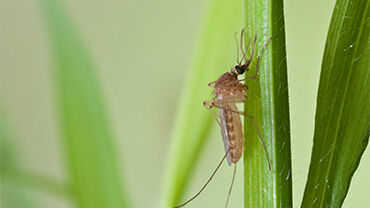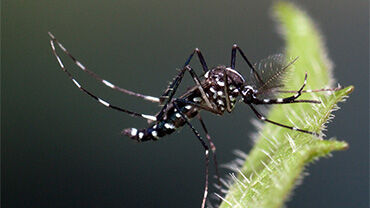Mosquito maps
These maps show the distribution and surveillance of vectors at ‘regional’ administrative unit level - NUTS3 or equivalent and NUTS2 in Austria, Belgium, Denmark, Germany, The Netherlands, England (UK), Scotland (UK) and Wales (UK).
The maps do not represent the official view or position of the countries.
Surveillance for invasive mosquitoes
The surveillance maps shows the regions where surveillance activities for invasive mosquitoes were held in Europe and neighbouring regions.
Invasive mosquito surveillance effort over 2015–2019
Seasonal active surveillance for invasive mosquitoes over 2017–2019
Distribution maps of invasive mosquitoes
The maps show the current distribution of invasive mosquito species in EU/EEA at ‘regional’ administrative unit level. The maps are based on data (published and unpublished) provided and validated by experts.
Separate maps for the distribution of each of the following exotic mosquito species are currently available: Aedes aegypti, Aedes albopictus, Aedes japonicus, Aedes atropalpus and Aedes koreicus.
For invasive species the possible distribution statuses are:
- Established: An established population (evidence of reproduction and overwintering) of the species has been observed in at least one municipality within the administrative unit.
- Introduced: The species has been detected (but without confirmed establishment) within the administrative unit.
- Absent: Field surveys or studies on mosquitoes were conducted but the species has not been detected within the administrative unit.
- No data: No sampling has been performed and no data on the species is available within the administrative unit.
- Unknown: It is unknown whether there are field studies on this species within the administrative unit.
Vector distribution status changes in terms of spatial units since the previous update
Since the previous update (March 2022), the main changes are:
- Aedes aegypti: introductions occur again in Spain-Canaries and the Netherlands, but populations are regularly eliminated.
- Aedes albopictus: updated maps show the species’ spread in Croatia, Hungary, Switzerland; Introductions are shown in Liechtenstein.
- Aedes japonicus: further establishment and spread in Austria, Germany (update for several years of spreading), Hungary, Serbia, Slovakia, The Netherlands.
- Aedes koreicus: updated maps show further spread in Hungary and Switzerland.
Aedes aegypti - current known distribution: February 2023
Aedes invasive mosquitoes - current known distribution: February 2023
Aedes albopictus - current known distribution: February 2023
Aedes japonicus - current known distribution: February 2023
Aedes koreicus - current known distribution: February 2023
Aedes atropalpus - current known distribution: February 2023
Surveillance for native mosquitoes
The surveillance maps shows the regions where surveillance activities for native mosquitoes were held in Europe and neighbouring regions.
Seasonal active surveillance for native mosquitoes over 2017–2019
Native mosquito surveillance effort over 2015–2019
Distribution maps of native mosquitoes
The maps show the current distribution of native mosquito species in Europe at ‘regional’ administrative unit level. The maps are based only on confirmed data (published and unpublished) provided by experts.
For native species the possible distribution statuses are:
- Present: The species has been observed to be present in at least one municipality within the administrative unit.
- Introduced: The species has been introduced in the administrative unit without confirmed establishment.
- Anticipated Absent: the species has never been reported and there is a high probability that it is absent.
- Confirmed Absent: the species has never been reported within the administrative unit and there have been field surveys or studies on mosquitoes within the last 5 years of the distribution status date.
- No Data: No sampling has been performed and no data on the species is available.
- Unknown: The status is unknown
Areas outside the scope of the VectorNet geographical scope are colour-coded as ‘Outside scope’.
Vector distribution status changes in terms of spatial units since the previous update
Since the previous update (March 2022), datasets were completed for a wide range of species, mostly as presence data (91.6%), and with the more most data for Culex pipiens (n=90). Important datasets for the occurrence of native species were reported for Ireland, Italy, and Hungary, for which all maps can now be considered completed as long as populations do not shift.






